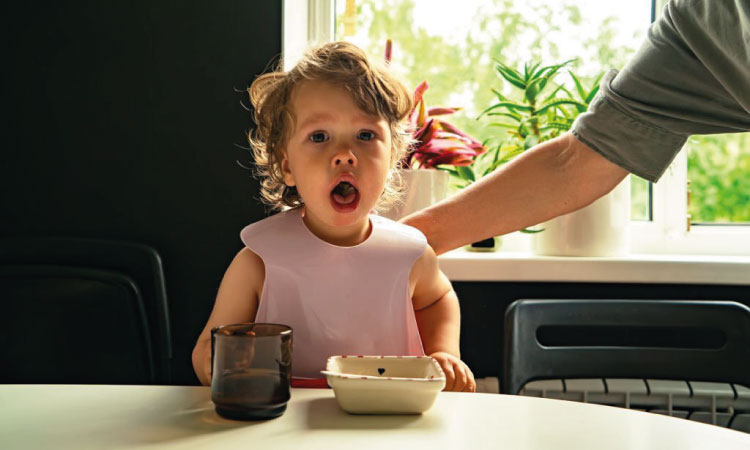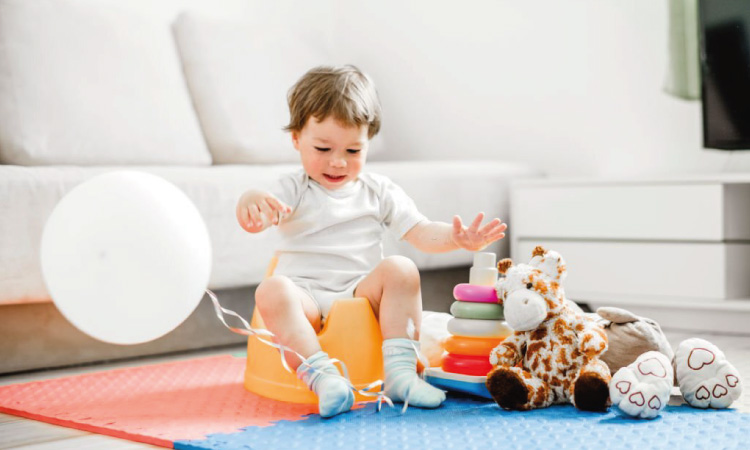Putting every object or food into their mouth is one way through which babies explore everything. However, this could easily cause choking hazards for them owing to their size. Choking in babies is usually caused by food, small toys, and tiny objects which can get stuck into the baby’s windpipe easily as it is still developing. It is hence better to know the top choking hazards for babies so that we can stay more cautious.
Since choking is fatal, always remember to keep dangerous objects and food out of the reach of young children. Because of their small throats and tracheas, objects get stuck easily making them prone to choking hazards. The best way to help a choking child is to be prepared. There are many ways for this so that you can act smart immediately.
Here is all you need to know about the biggest choking hazards for babies and how you must prepare yourself for emergencies.
Common Choking Hazards For Babies At Home And What Can You Do?
You see your child playing happily and suddenly find them gasping for breath. You discover your child was playing with a battery that is then missing. Choking is every parent’s nightmare. Though you might follow all safety rules for kids at home, choking is one of the most common reasons of death in babies and the sad thing is that it happens instantly. However, if you are prepared, you can easily save the child and keep them safe.
With some knowledge and precautions, you can minimize the risk of choking hazards for babies. A few common choking hazard symptoms in children are:
- Trouble in breathing
- Their cough is weak, ineffective coughing
- Inability to cry
- Bluish skin color (in people with darker skin, look at their lips, nails, and around the eyes)
- Unconsciousness
If you find your child gagging or coughing but can still breathe or talk, do not rush to pat her. See if she can dislodge it by herself as it means that her airway isn’t blocked completely.
Posted below are the common choking hazards for babies at home and what you can do.
1. Batteries
Batteries are one of the top choking hazards for babies. Batteries — especially small lithium cell batteries or button batteries which are found in children’s toys, TV remotes, or alarm clocks are even more dangerous. When these batteries are ingested, it could cause severe tissue damage to the child within two hours of swallowing and could also turn out to be fatal.
Make sure to keep all those loose batteries out of the reach of the child. Also, if the child’s toy is battery operated, ensure to tape the battery compartment. Never keep used and leaked batteries at home. Always discard it safely.
2. Balloons
Though balloons are fun as with their birthday parties, according to a source, half of the fatalities are caused by them. It is described as one of the top choking hazards for babies. Since latex balloons pop up easily, their small pieces can easily get into the child’s trachea which obstructs their airway. Either pick a latex-free balloon or skip it completely.
3. Whole or uncut round foods
Uncut grapes and blueberries are hazardous food for babies due to their size and shape which can slip and obstruct the baby’s airway. Though these are healthy fruits and contain most of the essential nutrients needed for the child, make sure to offer them in cut form so that it doesn’t cause a choking threat. Until the age of 3, grapes, strawberries, and cherry tomatoes should be offered in quarters and blueberries must be cut in half.
4. Coins, marbles, small stones

Though food and coin are proven factors for choking hazards for kids, swallowing coins is also a common choking hazard for babies, especially infants. Though many objects pass through the digestive tract easily, coins can pose dangers, especially if they get trapped in the esophagus. Parents are advised not to leave loose coins on the floors and be careful while handling purses.
Objects such as marbles or small stones, also need to be kept out of the reach of the child. If you have an older one at home whose games and activities include this kind of play, keep them away from the younger ones.
Related Reading: Top 15 Bathroom Safety Tips For Toddlers
5. Magnets
Small magnets that are found on refrigerators or in magnetic toys are again a serious choking hazard for babies. Though these are mostly found in the objects that are marketed toward the adults, babies do get access to them, and it could pose a great threat to their life. Remove magnets when the object is not in use or do not keep them within the reach of the child.
6. Small toys
A lot of small objects and play items such as choking hazards toys are a life threat to the child. Even those toys that are standard and prove no choking hazards could take away the life of your child within seconds. Hence you need to be extra vigilant while the child plays with it. Ensure that the toys you chose for the child are more than 1 ¾ inches.
Related Reading: 10 Simple And Effective Tips To Clean Baby Toys
7. Art supplies
While arts and crafts need to be introduced to the child at a young age, it is also vital to keep small dangerous items such as pen caps, beads, and buttons, out of reach of the child. Also, when it comes to crayons, paints, and markers, go for nontoxic brands as the child can easily put them in their mouth.
How To Prevent Choking In Babies And Toddlers?
Babies and toddlers are much closer to the ground than we parents are. Hence, they skillfully get access to small things which we might miss noticing. Choking is a very serious concern at any age and could lead to lasting damages or even death. Since the child’s trachea is still developing, they are prone to more risk. Hence it is important to keep away hazardous items from the reach of children.
We all may have an intuitive sense of choking hazards in babies. But let us see how to prevent this.
- Teach the child not to put small objects in their mouths or between their lips
- Keep dangerous items out of their reach. For example, pins, needles, nails, screws, or tacks
- Keep an eye on the child’s play area and check if there are any choking hazards and quickly remove them
- The child’s play toy should be in good condition and must be age-appropriate
- Wherever balloons or small toys may be around, keep an eye on the child
- Regular sweeping of the floor helps to trace small objects
- Keep inspecting cushions, rigs, and pillows to see if there are any small objects
- Do not buy vending machines for children as they come with a lot of small items
- Always check for loose or broken toys especially stuffed animals whose pieces such as eyes can be a threat
- Buy age-appropriate toys only
How To Prepare For Choking Emergencies?

Choking happens when the airway is blocked partly or fully which makes the person unable to breathe. While it is normal for children to put things into their mouths and explore things, small objects are just the right size to block the child’s airway easily. The best way to avoid choking hazards for babies is to keep these items away from the reach of the child.
No matter how cautious we are, children always put something in their mouth and swallow it which can cause choking. If you find your child starting to cough suddenly when not ill, and also has the habit of putting small objects in their mouth — the chance is they are choking.
- If the child is choking and turns blue, call the emergency and rush to the hospital immediately
- If you can see the object in the baby’s mouth, try to remove it gently without pushing it. Do not try if the object isn’t visible as it could push the object further inside
If the child is conscious and is struggling to breathe, try to dislodge the stuck item using the following methods.
Related Reading: 15 Common Foods That Can Be Unsafe For Babies
Choking emergencies for infants younger than one year
- Make sure the child’s torso is higher than the head. Keep the child’s face on your forearm, with the help of your thigh
- Pat the child’s back between the shoulder blades repeatedly and firmly using the heel of your hand
- If the above step doesn’t work, turn the child over and place them on a hard surface. Push in the center of the breastbone quickly with the help of two or three fingers a few times
- Keep repeating the firm pats and pushing of the chest until the object comes out and the child starts breathing or coughing
- Start CPR if the child falls unconscious at any point in time
Choking emergencies for toddlers and children over one year
The Heimlich maneuver works best for older children.
- Place your arms around the child’s waist with one hand in a fist above the navel
- Push the fist in and up with your free hand in quick, firm movements. This should force the object out
- Rush to the hospital if the child is unconscious or turns blue
Conclusion

Choking can occur even with preventive measures at home. However, if you know how to handle the situation, you could save your child. After a choking episode, take your child to the doctor to see if she is fully recovered. If you are still unsure about your ability to help your baby in an emergency, you can enroll yourself in an infant first aid class which covers both choking and CPR skills. Alternatively, keep choking hazards out of your baby’s play areas.

